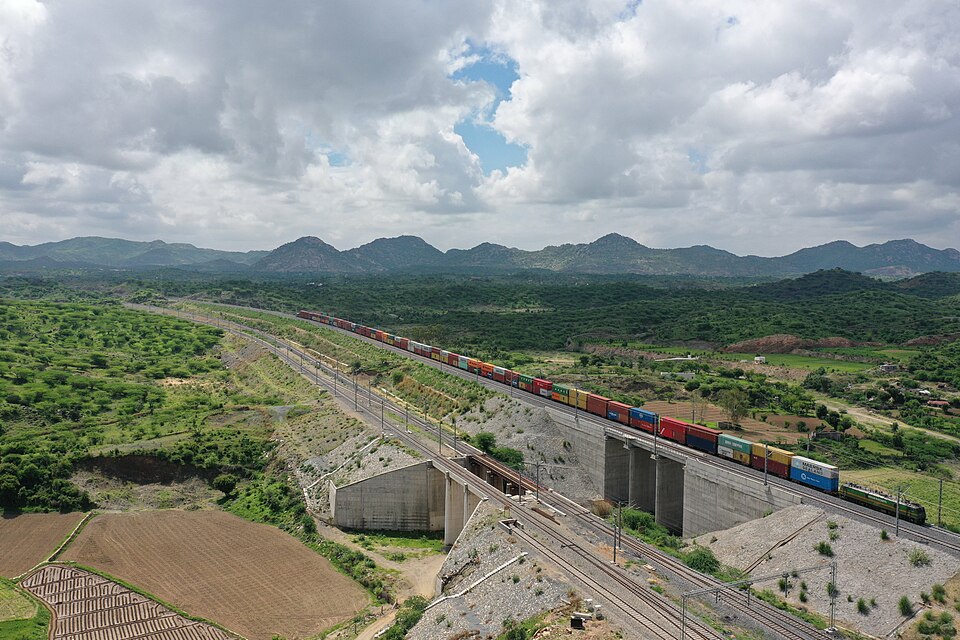
Last leg of WDFC in Maharashtra paves way for direct freight rail link from Delhi-NCR to Jawaharlal Nehru Port
MUMBAI : India’s biggest freight infrastructure project is nearing completion with a major milestone achieved in Maharashtra. The Dedicated Freight Corridor Corporation of India Ltd (DFCCIL) has achieved the breakthrough on the Kundevahal Tunnel in Panvel, opening the way for the final 102.90 km Vaitarna-Jawaharlal Nehru Port Trust (JNPT) section of the Western Dedicated Freight Corridor (WDFC).
This tunnel marks the completion of all major tunnel work on the WDFC, which is 1,504 km long from Dadri in Uttar Pradesh to JNPT in Navi Mumbai. The last segment goes through Palghar, Thane, and Raigad districts and is crucial to link India’s busiest container port with the industrial corridor.
“The Kundevahal breakthrough is not merely symbolic; it removes a major bottleneck and allows the final stretch to move ahead unhindered.We are well on track to complete the Vaitarna–JNPT corridor by December 2025,” a DFCCIL official said.
The final stretch involves 81.47 km of alignment alongside Indian Railways’ existing route and 21.42 km of diversion alignment. Construction had been delayed due to high-density urbanisation and environmental issues in the Mumbai Metropolitan Region, but progress has now been made on a large scale. Approximately 225 hectares of land were procured at Rs 2,600 crore, and almost 2,960 project-affected families were resettled.
DFCCIL has built over 15 km of elevated rail tracks to ensure environmental protection not to disturb mangrove areas. Rail flyovers are being undertaken at Kalamboli, Kopar, and Kharbao to speed up movement and improve connectivity.
Efforts are also in place to remove 20 level crossings for improved efficiency and safety, with 13 already eliminated. Eight road underbridges (RUBs) and five road overbridges (ROBs) have been constructed, while one RUB and five more ROBs are ongoing.
After it is finished, the freight corridor will avoid traffic-congested passenger routes. “A double-stack freight train from Dadri to JNPT will now take less than 50 hours, as against more than 75 hours on traditional lines,” the official said.
The WDFC and the Eastern DFC are part of a nationwide logistics overhaul worth Rs 1.24 lakh crore. These corridors are backed by international lenders such as JICA and the World Bank, and they are expected to enhance India’s freight capacity while lowering logistics costs.
DFCCIL managing director Praveen Kumar said ,”9 per cent financial rate of return on the corridors is impressive. They also have indirect advantages like less emission, reduced accidents, and timely delivery of goods.”
As freight traffic will continue to cross-subsidise passenger movement on Indian Railways, DFCs are crucial to free up congested tracks. Indian Railways’ target to handle 3,000 million tonnes annually by 2027 depends on such high-capacity corridors.
The corridors will also facilitate the growth of industrial areas, multimodal terminals, and inland waterway connections under the Gati Shakti scheme. With DFC operations, 480 more freight trains can be handled, and carbon emissions are expected to decrease by 457 million tonnes in 30 years.
The other major advantage of the DFC is that it will help build industrial clusters and connect freight networks with inland waterways at JNPT.
“With the new corridor, we can now transport 360 containers simultaneously instead of 90, reducing haulage costs by half. This is the first direct connection between Delhi-NCR and JNPT, and logistics will become much more competitive,” said Unmesh Wagh, Chairman, JNPT.
Mumbai and Maharashtra will gain significantly. The Vaitarna-JNPT corridor will take the pressure off Mumbai suburban and mainline rail networks and enable hassle-free access to JNPT, turbocharging cargo movement.
With the last mile falling into place, the Western DFC will redefine freight transport in India—faster, greener, and more efficient—with Mumbai at the centre of this revolutionary change.
Source : Indian Express
